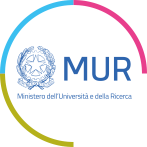Bando per assegno di ricerca
| Titolo del progetto di ricerca in italiano | Ghrelin peptide as novel anti-atrophic factors acting directly in the skeletal muscle: identification of their molecular mechenisms and of their role in cancer cachexia (Prof. Graziani) |
|---|---|
| Titolo del progetto di ricerca in inglese | Ghrelin peptide as novel anti-atrophic factors acting directly in the skeletal muscle: identification of their molecular mechenisms and of their role in cancer cachexia (Prof. Graziani |
| Settore Concorsuale | 05 - Scienze biologiche |
| S.S.D | BIO/11 - BIOLOGIA MOLECOLARE |
| Descrizione sintetica in italiano | Acylated & unacylated Ghrelin (AG/UnAG) are peptides induced by fasting. AG, but not UnAG, acts through GHSR1 to stimulate appetite and GH release. However both share common binding sites and biological activities. AG/UnAG inhibit muscle atrophy without involving food intake and hypertrophy through an unknown receptor. This and the finding that AG/UnAG are increased in cachexia suggest that cachexia may be associated to AG/UnAG resistance. We plain to: 1) identify the receptor mediating AG/UnAG anti-atrophic activity by a) reversible crosslinking and mass-spec protein identification; b) high throughput screening of a RNAi library. 2) investigate the hypothesis that AG/UnAG resistance may contribute to cachexia, possibly via PI3K. We will investigate a) the anti-cachectic activity of UnAG/AG in vivo; b) the hypothesis that cachexia is associated to ghrelin resistance in skeletal muscle; c) the hypothesis that PI3K regulates skeletal muscle sensitivity to AG/UnAG. |
| Descrizione sintetica in inglese | Acylated & unacylated Ghrelin (AG/UnAG) are peptides induced by fasting. AG, but not UnAG, acts through GHSR1 to stimulate appetite and GH release. However both share common binding sites and biological activities. AG/UnAG inhibit muscle atrophy without involving food intake and hypertrophy through an unknown receptor. This and the finding that AG/UnAG are increased in cachexia suggest that cachexia may be associated to AG/UnAG resistance. We plain to: 1) identify the receptor mediating AG/UnAG anti-atrophic activity by a) reversible crosslinking and mass-spec protein identification; b) high throughput screening of a RNAi library. 2) investigate the hypothesis that AG/UnAG resistance may contribute to cachexia, possibly via PI3K. We will investigate a) the anti-cachectic activity of UnAG/AG in vivo; b) the hypothesis that cachexia is associated to ghrelin resistance in skeletal muscle; c) the hypothesis that PI3K regulates skeletal muscle sensitivity to AG/UnAG. |
| Data del bando | 07/12/2012 |
| Paesi in cui può essere condotta la ricerca |
Italy |
| Paesi di residenza dei candidati |
All |
| Nazionalità dei candidati |
All |
| Sito web del bando | http://www.unipmn.it/Informazioni%20su/Ricerca%20Scientifica/Assegni%20di%20Ricerca/Bandi/default.aspx?DisplayContentByLocator=15722,11274 |
| Destinatari dell'assegno di ricerca (of target group) |
Experienced researcher or 4-10 yrs (Post-Doc) |
|---|
| Nome dell'Ente finanziatore | Università degli Studi del Piemonte Orientale |
|---|---|
| Tipologia dell'Ente | Public research |
| Paese dell'Ente | Italy |
| Città | Vercelli- Novara- Alessandria |
| Sito web | http://www.unipmn.it |
| assegni@unipmn.it |
| L'assegno finanziato/cofinanziato attraverso un EU Research Framework Programme? | No |
|---|
| Data di scadenza del bando | 07/01/2013 - alle ore 00:00 |
|---|---|
| Come candidarsi | http://wm.rettorato.unipmn.it/assegni/public_login.php |
